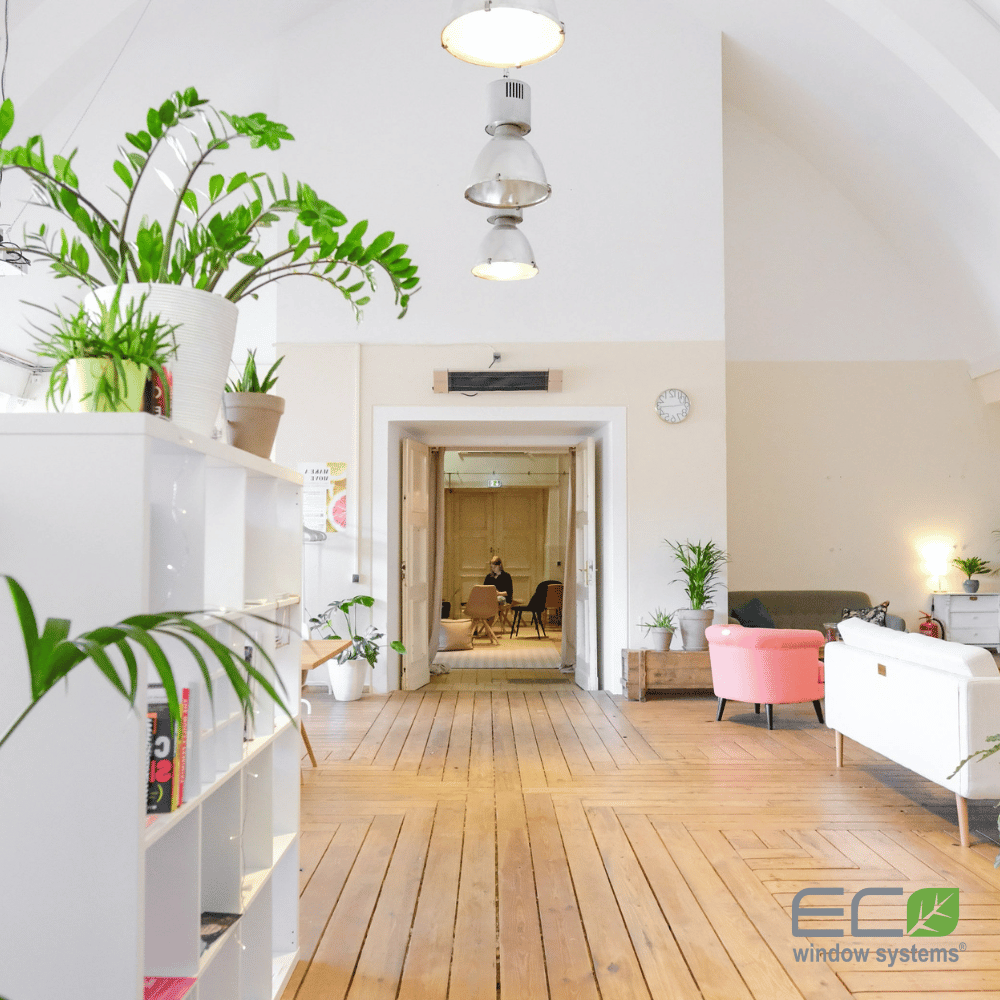In today’s fast-paced and technology-central world, connecting with nature has become more crucial than ever. So why does it still feel so hard to come by? Enter natural living spaces.
Also known as biophilic design, natural living spaces create more harmonious environments by enhancing our connection with the outside world through the integration of natural elements.
In this article, we will explore the numerous benefits of natural home environments for human health and well-being. We’ll also overview practical ways to incorporate nature into our living spaces to make our homes more inviting, peaceful, and conducive to a happier and healthier quality of life.
The Benefits of Natural Home Environments
Living in harmony with nature is linked with a multitude of physical, psychological, and emotional benefits. Many studies have delved into the positive impact of biophilic design on everything from mood to productivity.
Here are some of the key benefits of biophilic design:
Improved Physical Health
Exposure to natural light, greenery, and other natural elements has been linked with improved physical health. Specifically, research indicates that green spaces are an excellent defense against many modern health and wellness ills, including high blood pressure, weight gain, and poor cognitive functioning, and weak immune systems.
Take natural light, for example. Not only does it play a crucial role in regulating circadian rhythms and improving sleep patterns, but it also reduces the risk of other ailments, such as insomnia and seasonal affective disorder (SAD).
Enhanced Mental Well-being
Because nature has a calming effect on the body and mind, it can also reduce stress, anxiety, and mental fatigue while simultaneously increasing focus and creativity. This is because exposure to natural environments stimulates the production of endorphins, dopamine, and serotonin—neurotransmitters that promote feelings of happiness and contentness.
Increased Productivity and Concentration
Introducing biophilic design elements in living and working spaces can enhance productivity and concentration. Not only that, but studies have shown that employees in offices with natural elements have increased job satisfaction and reduced absenteeism.
As mentioned earlier, natural living spaces also foster feelings of tranquility, which can boost cognitive function and creativity.
Strengthened Connection with Nature
Incorporating natural elements into our surroundings at home facilitates stronger connections with the natural world. This connection encourages us to be more mindful of the beauty and fragility of nature and the environment. In fact, research indicates that individuals who spend time outdoors are more likely to engage in sustainable practices.
4 Ways to Create a Natural Home Environment
1. Add Natural Light with Fixed Windows
Maximizing natural light in our living spaces has a profound impact on physical and emotional well-being. A fixed window can be strategically placed to capture sunlight throughout the day thereby creating bright and inviting environments.
Sunlight exposure through an impact residential window also has other benefits, including increasing our vitamin D levels, promoting bone health, and boosting immune system function.
While sparkling clean fixed windows are things of beauty in and of themselves, there may be some situations where window coverings are necessary. In this case, light-colored curtains or sheer fabrics allow sunlight to filter through. The result? A best-of-both-worlds solution.
Combined with the appropriate window treatments, fixed windows can transform a dark space into a warm and sun-soaked room.
2. Incorporate More Green Elements
Greenery is so important to promoting peace that it deserves its own category. Introducing houseplants, indoor gardens, and other greenery is an excellent way to infuse your natural living spaces with gentle vibrancy.
Furthermore, houseplants not only add natural beauty to interior design schemes, but also improve overall air quality by purifying the air.
Don’t have a green thumb? You’re in luck. Many low-maintenance plants thrive indoors. These include snake plants, pathos, and peace lilies. Whether you bring in a plant or two or create an intricate indoor garden, greenery is a wonderful way to convene with nature within the confines of our own homes.
3. Reduce Outside Noise with Impact Windows and Doors
Noise pollution, which happens when unwanted sounds enter our environments, is a fact of life for many people. But just because we’re surrounded by noise doesn’t mean we could—or should—just get used to it. In fact, unwanted sounds can have a hugely detrimental impact on human health and wellness, with detrimental effects including difficulty sleeping, declines in cognitive performance, higher blood pressure and rates of cardiovascular disease, and higher stress. It can also cause frustration and irritability. ‘
That’s where high-performance impact doors and windows come in. A must-have in storm-prone areas, but beneficial in any region, thick and durable impact doors and windows create serene and peaceful living environments by significantly reducing outside noise.
And while the noise-reducing capabilities of impact windows and doors are reason enough for many homeowners to upgrade to impact windows, there are other advantages, including hurricane protection, enhanced safety and security, improved energy efficiency, and curb appeal.
4. Embrace Color Palettes That Facilitate Relaxation
Color doesn’t just play a pivotal role in determining the look of our living spaces; it also directly influences how we feel in them. Choosing a natural and organic color palette is an easy yet effective strategy.
In particular, earthy tones, such as soft greens, warm browns, and gentle blues, evoke calmness and tranquility while cultivating a sense of connection to the natural world. Incorporating these colors into furniture, paint, and decor creates cohesive and inviting interiors. Additionally, wood, stone, and other natural materials are an excellent way to complement your color scheme.
Natural living spaces offer a multitude of benefits with the potential to significantly improve our physical, mental, and emotional well-being. By embracing the principles of biophilic design and integrating natural elements into our homes, we can design mindful sanctuaries that reflect nature’s essence, foster deeper connections with nature, inspire us to be better stewards of the planet, and promote balanced and healthy lifestyles.
